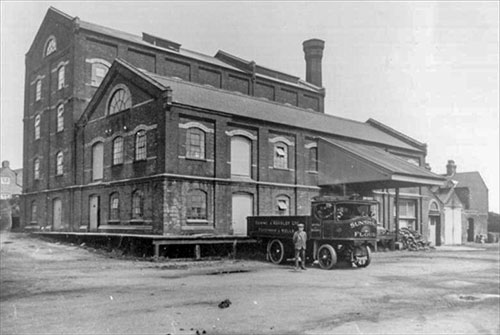
|
Wells
Steam Mill |
 |
Dewing & Kersley's lorry waiting to be loaded - c.1912 |
| Wells steam mill was built at Maryland just north of the railway station in 1898. |
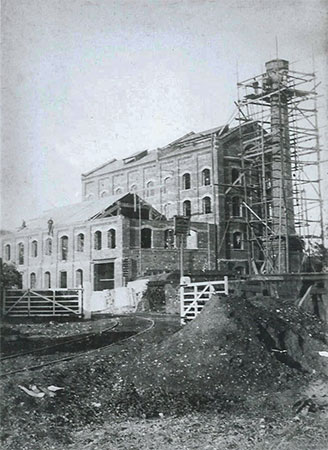 |
Mill building nearing completion with the rail link already laid - 1898 |
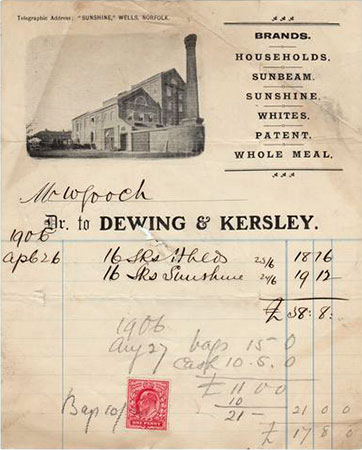 |
Dewing & Kersley invoice - 26th April 1906 |
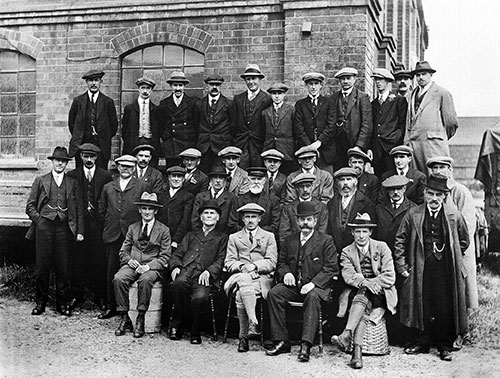 |
Dewing & Kersley workers posing c.1915 |
NORFOLK MILLS FACE CLOSURE |
Two mills of Dewing & Kersley are facing closure at Wells and Fakenham. This will be the outcome of the coming retirements of the two joint managing directors, Mr. L. E. Eagling, at Fakenham, and Mr. F. L. Cuthbert at Wells. Yesterday a reporter was told by Mr. Eagling at the Fakenham head office, "Wells is absolutely certain to go, and nothing short of a miracle could change the closure decision at Fakenham." A phasing-down process has been set in motion so the firm closes down by the end of the year. Redundancies will total 30, ten at Fakenham and 20 at Wells. |
EFFORTS |
Mr. Eagling, who began his career with the firm in August, 1926, as office boy, added every effort had been made to find a buyer, or buyers, "but we were unsuccessful." Mr. Cuthbert has been in the flour milling trade for 50 years, most of the time with Dewing & Kersley. The firm is completely independent, with Wells as a flour mill, and the Fakenham_mill mill producing animal feed stuffs. There are six lorries in use, three at each place. The Fakenham_mill has been using all locally-produced cereals such as oats, barley, wheat and maize from other sources. Eighty percent of the Wells mill trade has been concerned with producing flour for the biscuit trade and the remainder for bread. The bulk of the wheat has been home grown but there is also a percentage from Canada. The port of Wells is in no way affected by the Wells closure. "A lot of our trouble is our geographical position. Four fifths of our flour goes to London from Wells and London is 120 miles from Wells," said Mr. Eagling. This alone put the North Norfolk firm at a disadvantage. Dewing & Kersley had been competing against Essex mills. "We can't give a firm date. It will take some time to run down but we have to cease milling by December 31st at Wells and obviously you couldn't run this place at Fakenham without that at Wells," he said. |
ALLOTMENTS |
Dewing & Kersley are also owners of allotments near the Fakenham_mill and these are let mostly to staff. Both mills are landmarks in their localities. Straddling the River Wensum at Fakenham, the Dewing & Kersley mill is a focal point of one of the town's most noted beauty spots, which with the bridge over the Wensum, attracts many photographers, artists and anglers. The company was registered at Fakenham in 1909 but its history as a mill goes back much earlier. Augustine Canons of Hempton Priory founded during the reign of Henry I may have had a mill at Fakenham. Deeds of the existing mill date back to about 1760 when there was a water mill. Until the early years of the present century stone-ground flour was made at the mill which was in the occupation in turn of Mr. Joseph Fyson and Charles Horsley & Son., before it passed into the ownership of Dewing & Kersley in 1909. Closely identified with the developmet of the business was the late Col. Sidney Dewing, who was the chairman of the directors. |
CONCERN |
The Wells mill was built in 1898. Before the war the firm was associated with a considerable export trade. |
 |
Dewing & Kersley's stand at the Royal Norfolk Show in 1949 |
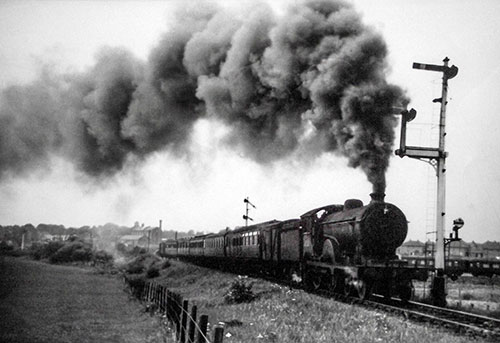 |
Mill steam chimney can be seen in the distance as a train accelerates out of the station - c.1950 |
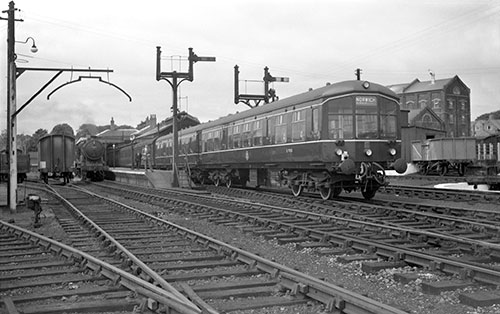 |
Mill steam chimney had gone by the latter days of steam travel in 1956 |
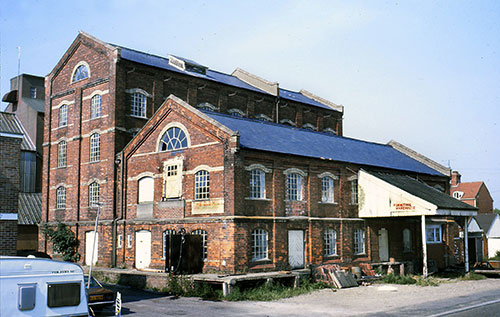 |
Mill front unit in use as an antiques centre - c.1990 |
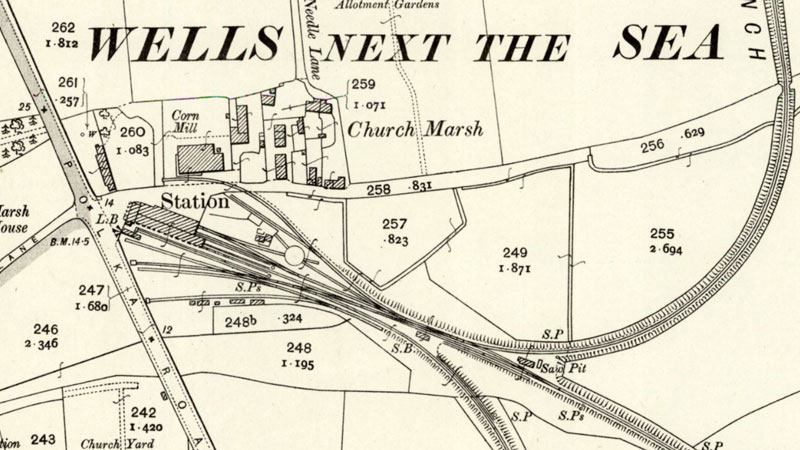 |
O. S. Map 1904 Courtesy of NLS map images |
| 1898: Mill built 1906: Dewing & Kersley already running Wells steam mill
Kelly's 1937: Dewing & Kersley Ltd. |
If you have any memories, anecdotes or photos please let us know and we may be able to use them to update the site. By all means telephone 07836 675369 or
|
| Nat Grid Ref TL | Copyright © Jonathan Neville 2019 |